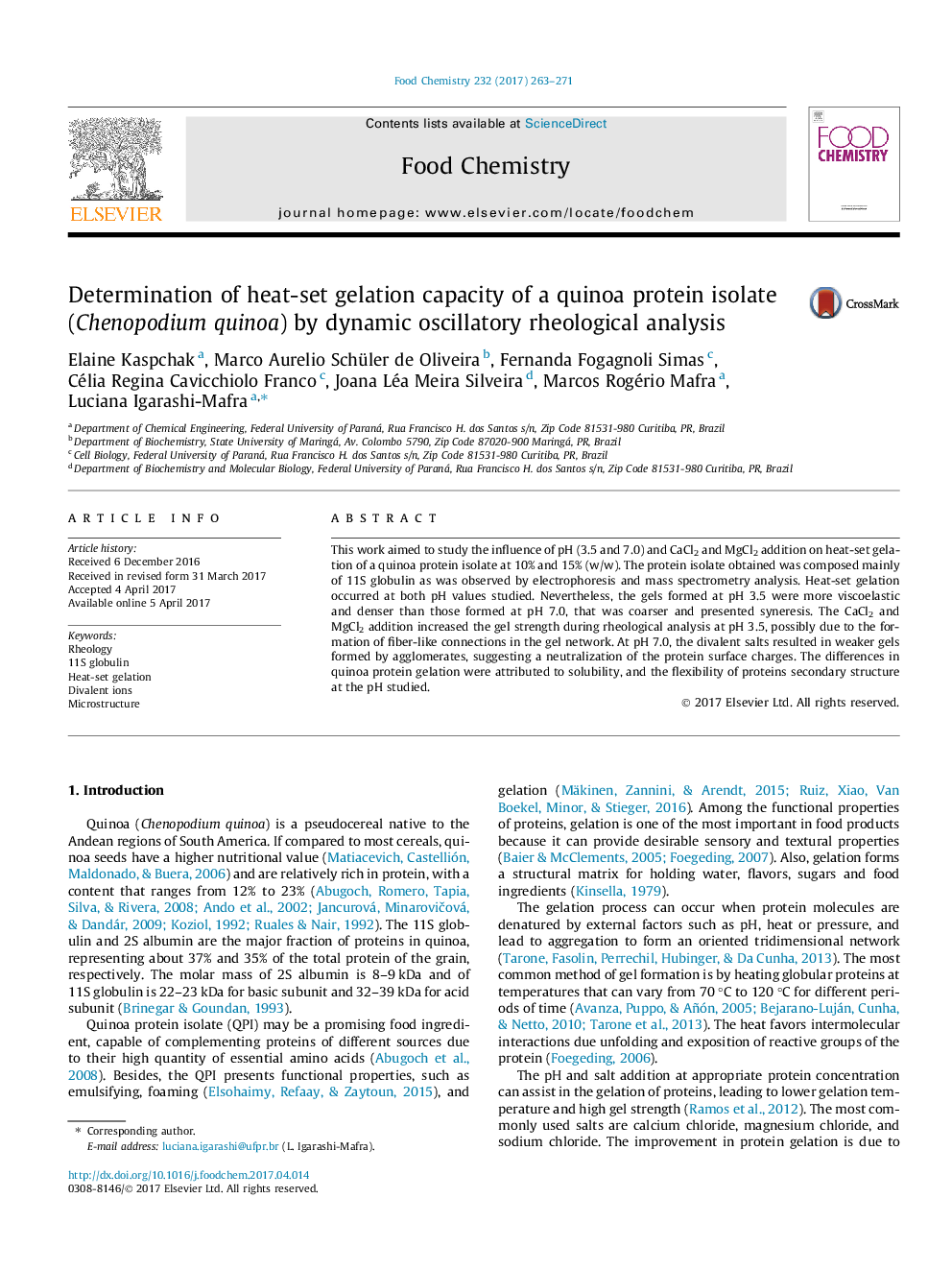| Article ID | Journal | Published Year | Pages | File Type |
|---|---|---|---|---|
| 5133406 | Food Chemistry | 2017 | 9 Pages |
â¢Quinoa protein secondary structure and solubility are influenced by pH.â¢Heat-set gelation of quinoa protein isolate produces high strength gels (above 4 kPa).â¢Gelation of quinoa protein isolate occurs in acid pH (3.5) and neutral pH (7.0).â¢Gelation of quinoa protein isolate is modified by divalent ions such Ca2+ and Mg2+.â¢Gel microstructure is modulating by the pH and divalent salt addition.
This work aimed to study the influence of pH (3.5 and 7.0) and CaCl2 and MgCl2 addition on heat-set gelation of a quinoa protein isolate at 10% and 15% (w/w). The protein isolate obtained was composed mainly of 11S globulin as was observed by electrophoresis and mass spectrometry analysis. Heat-set gelation occurred at both pH values studied. Nevertheless, the gels formed at pH 3.5 were more viscoelastic and denser than those formed at pH 7.0, that was coarser and presented syneresis. The CaCl2 and MgCl2 addition increased the gel strength during rheological analysis at pH 3.5, possibly due to the formation of fiber-like connections in the gel network. At pH 7.0, the divalent salts resulted in weaker gels formed by agglomerates, suggesting a neutralization of the protein surface charges. The differences in quinoa protein gelation were attributed to solubility, and the flexibility of proteins secondary structure at the pH studied.
